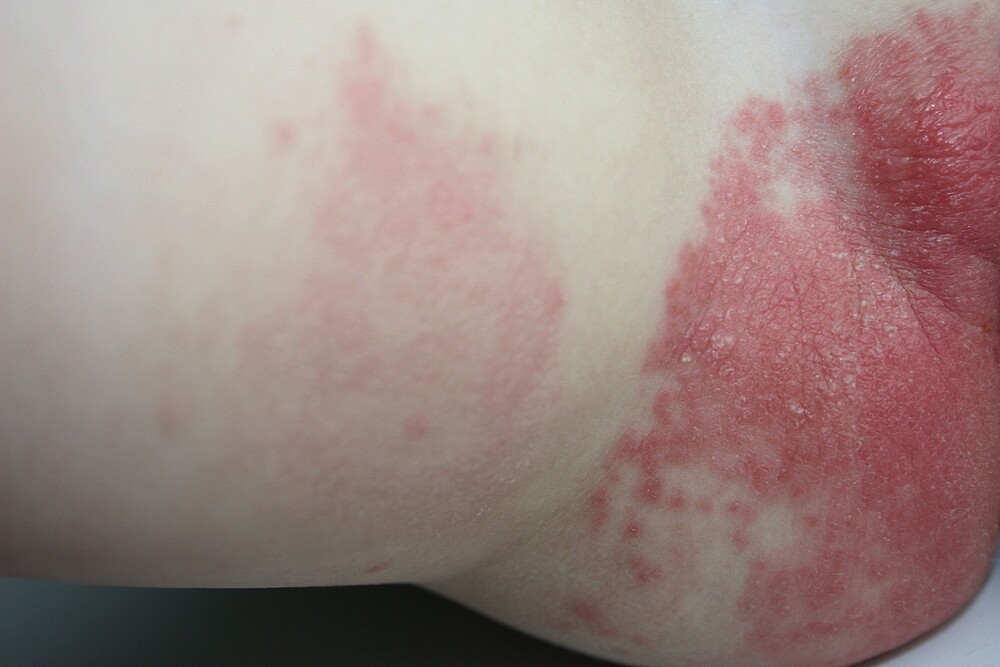Hardly any baby is spared from a sore bottom. But sometimes it gets really nasty and diaper dermatitis develops. Here you can learn how to treat and above all prevent it.
It is a dilemma that most parents face at some point. The tender baby’s bottom is fire-red and hurts your little darling quite a bit. This is due to the warm and humid climate that prevails in the diaper. In combination with friction, the sensitive skin becomes red and sore. Damaged skin in turn makes it easier for fungi and bacteria to spread. The result: inflamed, open skin areas, also known as diaper dermatitis.
What is diaper rash (diaper dermatitis)?
Diaper dermatitis (diaper rash) is one of the most common skin diseases in infants and toddlers and generally refers to a skin rash in the intimate and buttock area. Fungi and bacteria can multiply particularly well in the warm, moist nappy region. About 75 percent of these are fungal infections, a so-called diaper sores. Infants aged nine to twelve months are particularly affected. But older, incontinent people can also suffer from napkin dermatitis.
Diaper dermatitis: Symptoms
- The affected skin appears blurred and reddened and some areas are frequently wet.
- At the edge of the diaper rash, small pus blisters (pustules, pimples) or nodules (papules) may appear.
- Sometimes the blisters spread to the inner thighs and lower back or abdomen and are called satellite pustules.
- The affected skin can be very itchy and may also hurt and burn.
- The skin areas that are in direct contact with the diaper are mainly affected. Skin folds are usually left out.
- Babies with diaper dermatitis often react restlessly and tearfully or sleep poorly.
If the skin is also affected by a fungus, the symptoms become even worse. The skin is much more reddened and the edges are sharply defined and scaly.
What are the causes of diaper dermatitis?
Most parents know it: Once you change your diaper too late and your bottom is bright red. This is mainly due to the pungent ammonia that is produced when the diaper is worn too long. Other reasons for diaper dermatitis:
- Diarrhoea
- Infects
- Spicy food
- Antibiotics or other drugs that alter the intestinal and skin environment
- Hypersensitivity or allergy to the diapers and care products used
- Babies teethe and are more prone to redness and rashes at this stage of development
However, skin changes in the diaper area can also be caused by other diseases (e.g. psoriasis, allergies, seborrhoeic infant eczema). The paediatrician can make the correct diagnosis and initiate appropriate treatment measures.
Prevention of diaper dermatitis: What you can do
It is important in every respect that the bottom is kept dry. With these measures, this can be achieved:
- Frequent diaper changes (in newborns about every two hours, later every three to four hours) and, above all, immediate diaper change after defecation.
- Careful and gentle drying of the nappy area after cleaning or bathing. Don’t forget skin folds!
- Kick or crawl naked so that air and light can reach your bottom.
- Breastfed babies suffer less from diaper dermatitis because their stool has a lower pH value, among other things.
- Use care products without chemical additives or fragrances.
How to treat a sore, inflamed bottom?
- Anti-inflammatory ointment, something against fungal or bacterial infestation (cortisone or antifungal ointments), in case of strong bacterial infestation antibiotics may be necessary.
- Ointments with dexpanthenol or zinc promote healing.
- Camomile baths soothe the affected skin (pour 1 litre of camomile tea into the bath water).
- A few drops of breast milk on the sore skin will soothe the skin irritation.
- Black tea soothes the sore skin.
- A sore bottom heals better and faster if a lot of light and air reaches the skin.
- Plastic diapers should be avoided.

